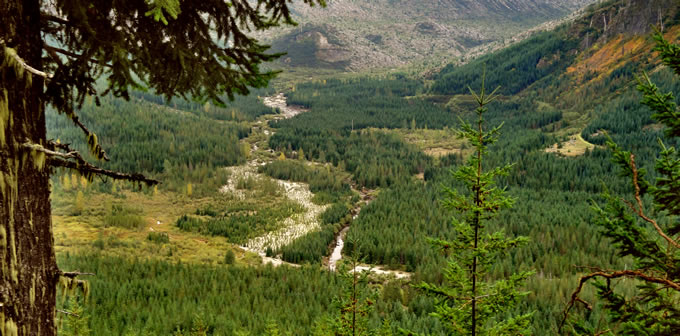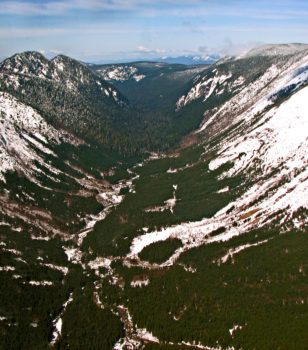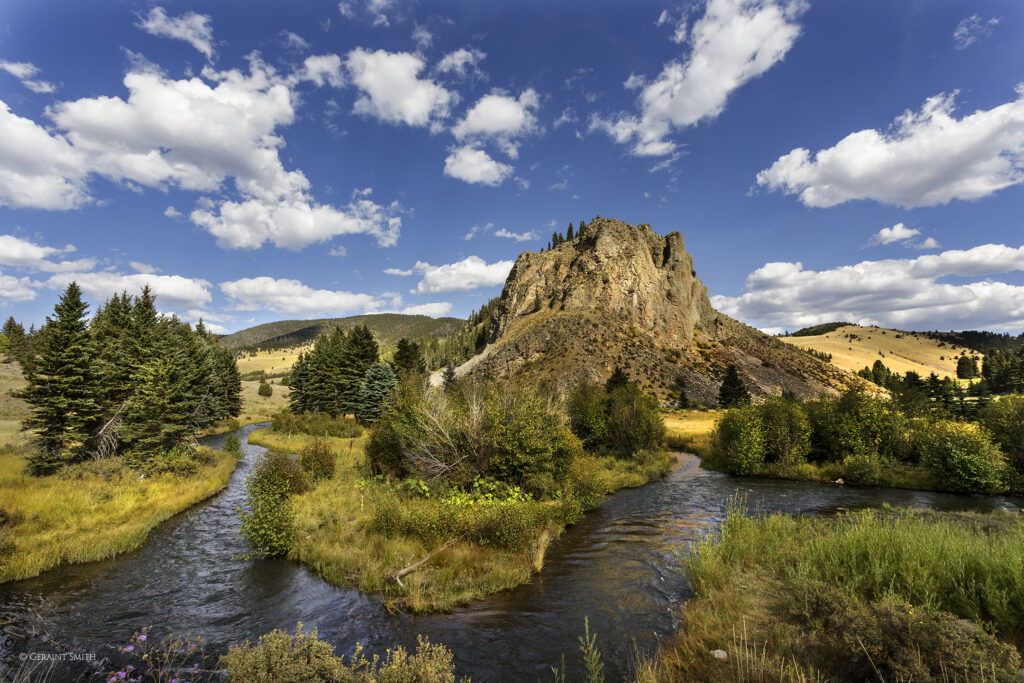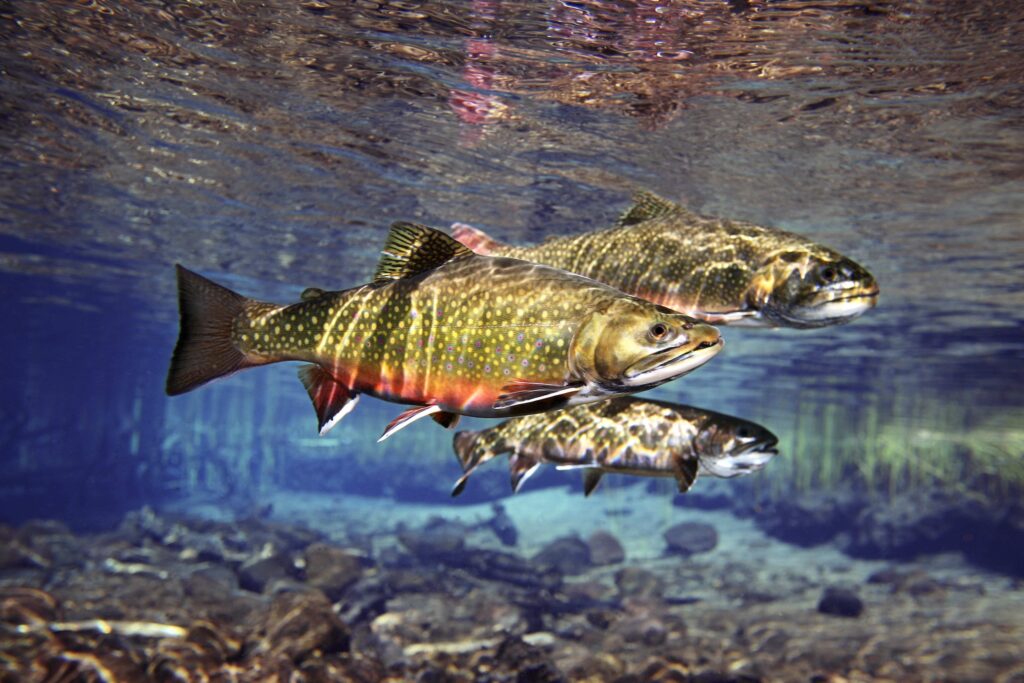Preserving Special Places: The Green-Toutle River
Washington's Green-Toutle River is wild, special place that is eligible for designation under the Wild and Scenic Rivers Act, but proposed mining activities threaten water quality throughout the watershed.

Guest post by Nicole Budine is a part of our America’s Most Endangered Rivers® series spotlighting the Green-Toutle River.
Since 2005, the Green-Toutle River in Washington State has been threatened by mining proposals. Mining activities in this valley, on the banks of the Green-Toutle River, could pollute these pristine waters, and would destroy the Green River valley as a place for solitude and backcountry recreation.
I first experienced the Green-Toutle River last October, when I visited the Green River valley with a small group to create the video below about this special place.
The beauty of the river and the valley exceeded my high expectations. Despite our concerns that the foggy weather would prevent us from seeing much of the valley, the fog lifted, exposing creeks cascading down the steep valley walls before joining the Green-Toutle River. Autumn in the valley is especially beautiful, with multi-colored shrubs in the blast-zone and yellow trees mingled with the evergreens. During my visit, it was easy to see why many people have worked hard to protect this river from a risky hardrock mine.
The Green-Toutle River begins in the Mount St. Helens National Volcanic Monument before exiting the Monument’s borders to flow through the scenic Green River valley. In this valley, the river passes through a landscape shaped by the 1980 eruption of Mount St. Helens – with blast zone bordering patches of forest that escaped the eruption. The valley is only accessible by one, single lane forest road and surrounded by large roadless areas – making it a fantastic place for backcountry recreation activities such as hiking, backpacking, hunting, and horseback riding. The scenic beauty of the valley, its proximity to the Monument, and the immense recreation opportunities motivated the U.S. Forest Service to purchase some lands within the valley with funding from the Land and Water Conservation Fund. Some of the very same LWCF lands are now at risk of mining exploration and development.
The scenic valley bordering the Mount St. Helens National Volcanic Monument is critical to the health of the Green-Toutle River. People enjoy the remote valley for backcountry recreation and solitude, but the valley has another important value – keeping the headwaters of the Green-Toutle River cool and clean. The wild landscape along much of the river helps to maintain high water quality for wild steelhead and drinking water for downstream communities.
The high water quality and unique ecological features of the Green River valley make the Green-Toutle River eligible for Wild and Scenic River designation. In addition to its beautiful vistas, recovery areas from the 1980 eruption provide unsurpassed opportunities for scientific interpretation of the effects of the eruption and natural restoration processes. They also provide unique habitats for a host of native species, including northern spotted owl and a growing population of elk.
Mining activities in this valley threaten water quality throughout the Green-Toutle River, and compromise the entire watershed. Thanks to the dedication of those who care deeply about this river, we have successfully prevented mining along the Green-Toutle River for over a decade. However, the U.S. Forest Service and Bureau of Land Management may once again allow a foreign mining company to conduct exploratory drilling along the banks of this treasured river. Exploratory drilling risks introducing pollutants into these pristine waters, and it is the first step toward developing a large open pit mine in the Green River valley. We must act now to stop the agencies from issuing these permits and urge them to protect this river long term. With your help, we are hopeful that future generations will be able to enjoy the Green-Toutle River’s clean waters and unique landscape.
[su_button url=”https://act.americanrivers.org/page/711/action/1″ background=”#ef8c2d” size=”5″ center=”yes”]Take action »[/su_button]
 Author: Nicole Budine, Policy and Campaign Manager, Cascade Forest Conservancy
Author: Nicole Budine, Policy and Campaign Manager, Cascade Forest Conservancy
Nicole joined the Cascade Forest Conservancy in 2016. She grew up in upstate New York, cultivating her love of nature by exploring the local forests and rivers. Prior to joining the Cascade Forest Conservancy, she held roles doing policy and legal work for Trustees for Alaska and Oregon Wild. In her free time, Nicole enjoys painting, snowboarding, and exploring the northwest with her dog.





3 responses to “Preserving Special Places: The Green-Toutle River”
If they get that mining permit, I’ll be damned if I don’t settle a homestead at Spirit lake. They can study the mine. It is getting to be a travisty how so much land is collected up in the name of science. Great, it has been established that yes stuff grows back. Perhaps not as great as it did previously, it is still more livable than the deserts of the southwest. Before St Helens went off it was nothing more than timber waiting to be sold off in quadrants by the BLM. It was outback then and it is still outback today. Some people still need real frontier, go figure.
This mining movement has been going on for over a decade, the company spearheading this effort does not run mines, they identify claims and try to sell them to real mining companies. The cost to mine this are and the predicted environmental damage that would occur has kept it from ever developing. But, since we live in an ever changing world, we need to act now to protect this are today for future generations to come. We need to negotiate a settlement to this mining claim once and for all. Urge your elected officials to step up and settle this issue today.
If we want to bring economic development to the East Lewis County area we should look at connecting road access between SR 504 and SR 12, connecting Mt Rainier to Mt St Helens would bring more gold and silver from green industries, tourist and recreation than any short term mining effort. We need to look at how to commune with our natural resources to produce economic benefit, save the ecology and quality of life for humans and wildlife. Making responsible choices that benefit all parties concerned, it doesn’t have to be one way or the other, we can do both.
Thank you, Nicole, for your timely article about the Green River! We will be backpacking a stretch of it in a couple weeks and will be sending you plenty of images to continue advocating for its permanent protection.